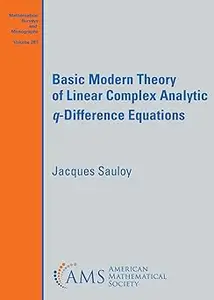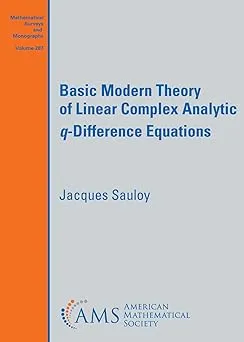Jacques Sauloy, "Basic Modern Theory of Linear Complex Analytic $q$-Difference Equations "
English | ISBN: 1470478404 | 2024 | 664 pages | PDF | 7 MB
English | ISBN: 1470478404 | 2024 | 664 pages | PDF | 7 MB
The roots of the modern theories of differential and $q$-difference equations go back in part to an article by George D. Birkhoff, published in 1913, dealing with the three “sister theories” of differential, difference and $q$-difference equations. This book is about $q$-difference equations and focuses on techniques inspired by differential equations, in line with Birkhoff's work, as revived over the last three decades. It follows the approach of the Ramis school, mixing algebraic and analytic methods. While it uses some $q$-calculus and is illustrated by $q$-special functions, these are not its main subjects. After a gentle historical introduction with emphasis on mathematics and a thorough study of basic problems such as elementary $q$-functions, elementary $q$-calculus, and low order equations, a detailed algebraic and analytic study of scalar equations is followed by the usual process of transforming them into systems and back again. The structural algebraic and analytic properties of systems are then described using $q$-difference modules (Newton polygon, filtration by the slopes). The final chapters deal with Fuchsian and irregular equations and systems, including their resolution, classification, Riemann-Hilbert correspondence, and Galois theory. Nine appendices complete the book and aim to help the reader by providing some fundamental yet not universally taught facts. There are 535 exercises of various styles and levels of difficulty. The main prerequisites are general algebra and analysis as taught in the first three years of university. The book will be of interest to expert and non-expert researchers as well as graduate students in mathematics and physics.
Read more



